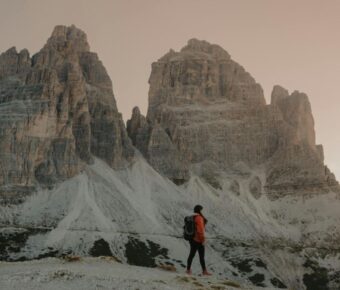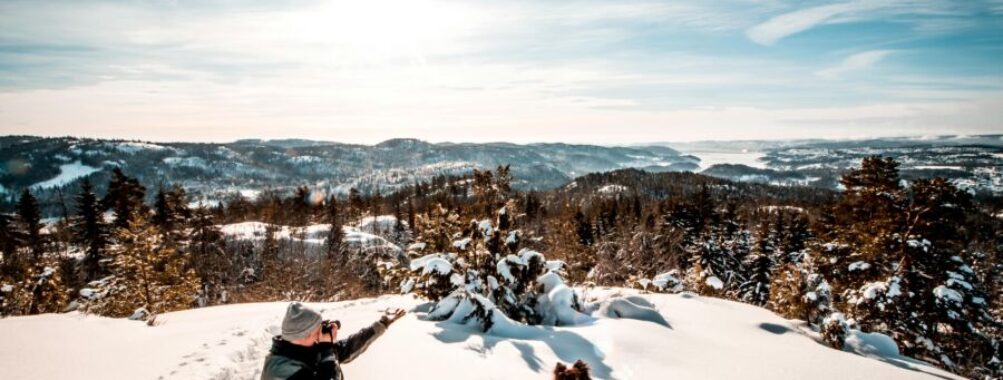
Best National Parks to Visit in Winter: 7 Snowy Wonderlands You Can’t Miss
Winter is a magical time to explore America’s national parks. Snow-capped mountains, frozen waterfalls, and serene landscapes create a whole new world of beauty. Many parks offer unique winter activities like skiing, snowshoeing, and ice skating that you can’t experience any other time of year.
Some parks are at their best in winter. Crater Lake’s deep blue waters look even more striking surrounded by snow. The geothermal features at Yellowstone are extra dramatic with steam rising into the cold air. And in desert parks like Death Valley, the cooler temperatures make hiking much more pleasant than in summer.
Winter visits also mean fewer crowds and a chance to see wildlife like wolves and elk more easily against the snowy backdrop. Just be sure to check which roads and facilities are open, dress in warm layers, and follow winter safety guidelines. With the right preparation, a winter trip to a national park can be an unforgettable adventure.
Contents
- Key Takeaways
- Why Visit National Parks in Winter?
- Top Winter National Parks for Snow Enthusiasts
- Yellowstone National Park
- Rocky Mountain National Park
- Mount Rainier National Park
- Best National Parks for a Desert Winter Experience
- Death Valley National Park
- Joshua Tree National Park
- Big Bend National Park
- Winter Wildlife Watching in National Parks
- Unique Winter Festivals and Events at National Parks
- Cold-Weather Hiking: Preparing for Winter Trails
- Photographing the Winter Scenery in National Parks
- Staying Warm: How to Enjoy National Parks During the Cooler Months
- Winter Accessibility and Facilities in National Parks
- Escape to a Tropical Paradise: Winter Visits to Warmer National Parks
- Everglades National Park
- Biscayne National Park
- Dry Tortugas National Park
- Winter Camping Tips for National Park Adventurers
- Frequently Asked Questions
- What are the top winter-friendly national parks in the United States?
- Which national parks in California offer the best winter experiences?
- Are there any national parks particularly suitable for family visits during the winter season?
- What national parks in the southern United States remain warm during January?
- Can Zion National Park be enjoyed during the winter months?
- Which national park is often rated as the most stunning to visit in winter?
- More Travel Guides
Key Takeaways
- Winter transforms national parks with snow-covered landscapes and unique activities
- Some parks are best experienced in winter due to cooler temperatures or enhanced scenery
- Proper planning and safety precautions are essential for an enjoyable winter park visit
Why Visit National Parks in Winter?
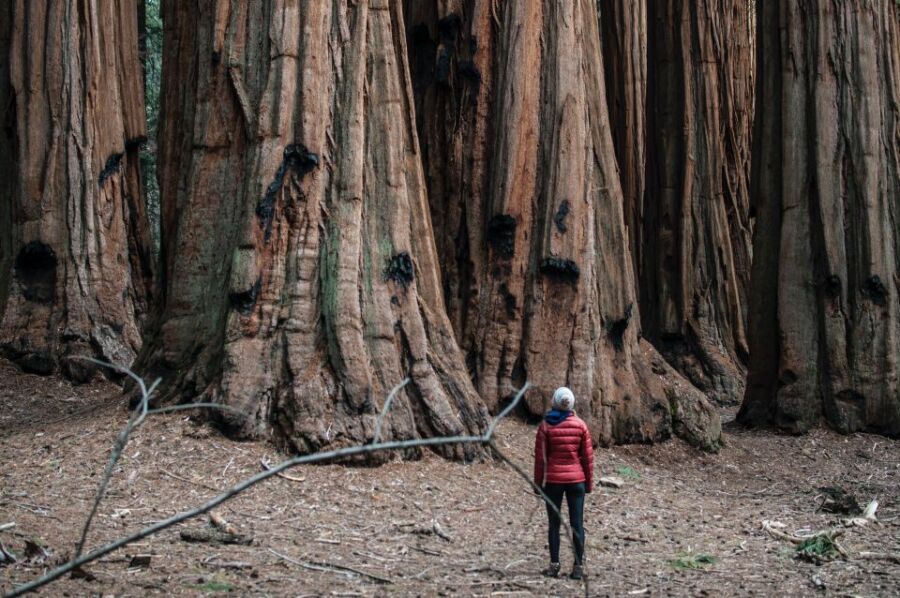
Winter transforms national parks into magical wonderlands. You’ll see landscapes dusted with snow and icy formations that only appear in the colder months. It’s a totally different experience from summer visits.
The parks are way less crowded in winter too. You can enjoy the scenery without bumping into crowds of tourists everywhere. Imagine having popular spots almost to yourself!
Winter opens up fun new activities in the parks. You can go snowshoeing through pristine forests or try cross-country skiing on groomed trails. These are great ways to explore and get some exercise.
Wildlife viewing can actually be better in winter. Animals are often easier to spot against the white snow. You might see elk, bighorn sheep, or even wolves if you’re lucky.
The crisp winter air and clear skies make for amazing stargazing. On cold nights, the stars seem to shine even brighter. It’s perfect for astrophotography if that’s your thing.
Winter lodging deals are another perk. You can often find cheaper rates on hotels and cabins near the parks during the off-season. This makes a winter park trip more budget-friendly.
Just remember to pack warm layers and check park conditions before you go. Some roads or facilities may be closed in winter. But with a little planning, you’re in for an unforgettable adventure!
Top Winter National Parks for Snow Enthusiasts
Winter transforms some national parks into snowy playgrounds perfect for outdoor adventures. You’ll find frosty landscapes and exciting activities at these parks that shine brightest when covered in white.
Yellowstone National Park

Yellowstone becomes a winter wonderland when snow blankets the landscape. Steam from hot springs and geysers creates an otherworldly scene against the white backdrop. You can explore on snowshoes or cross-country skis to spot wildlife like bison and elk.
The park offers guided snowmobile tours to see frozen waterfalls and snow-covered thermal features. Old Faithful still erupts regularly, even in frigid temps. For a unique experience, book a stay at the Snow Lodge. It’s only accessible by snowcoach in winter.
Don’t miss the chance to soak in Mammoth Hot Springs. The warm water feels amazing on a cold day. Just be careful of icy boardwalks!
Rocky Mountain National Park
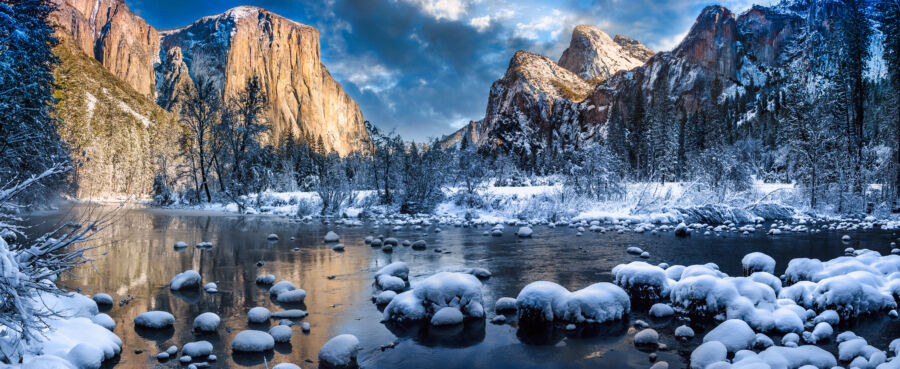
Rocky Mountain‘s snowy peaks are a paradise for winter sports fans. You’ll find options for downhill skiing, snowboarding, and sledding. Cross-country skiing and snowshoeing are great ways to explore quiet forests and frozen lakes.
Keep an eye out for elk and bighorn sheep. They often hang out at lower elevations in winter. The park plows some roads, so you can still drive to popular viewpoints like Many Parks Curve.
For a fun challenge, try winter camping in the backcountry. Just make sure you’re prepared for extreme cold. Or stay cozy in nearby Estes Park and take day trips into the park.
Mount Rainier National Park
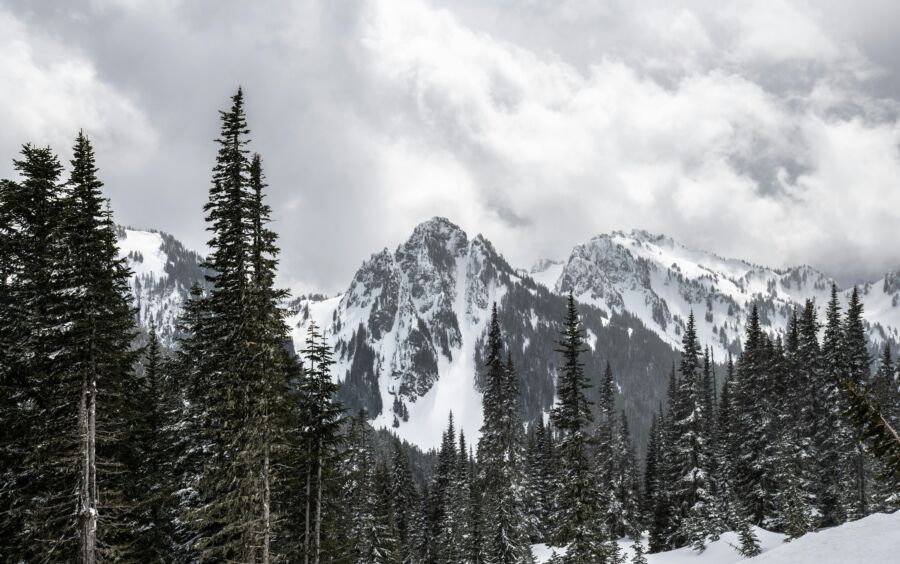
Mount Rainier‘s massive snow-covered peak is a stunning sight in winter. The park gets tons of snow, making it perfect for all kinds of winter activities. You can go sledding at Paradise, one of the snowiest places in the U.S.
Snowshoeing is a great way to explore. Join a ranger-led tour to learn about winter ecology. If you’re experienced, you can backcountry ski or snowboard on the mountain’s slopes.
Watch for avalanche warnings and check road conditions before you go. Some areas close in winter. But the extra effort is worth it to see Rainier’s icy waterfalls and snow-draped forests.
Best National Parks for a Desert Winter Experience
Desert national parks offer a unique and magical winter experience. You can enjoy mild temperatures, clear skies, and stunning landscapes without the intense heat of summer. Let’s explore some top desert parks to visit during the cooler months.
Death Valley National Park
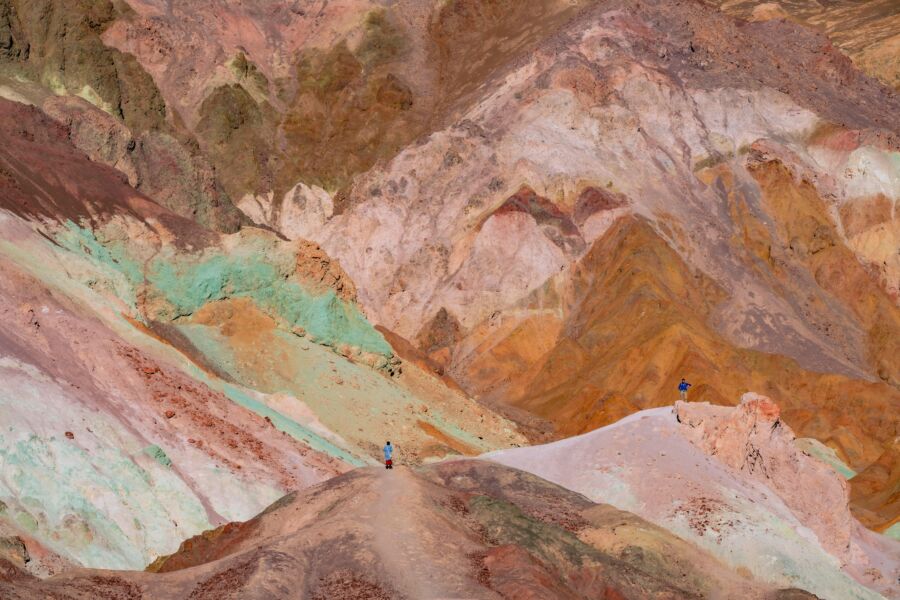
Death Valley transforms into a winter wonderland – minus the snow! You’ll find pleasant daytime temperatures in the 60s and 70s, perfect for exploring. Take a scenic drive to Badwater Basin, the lowest point in North America at 282 feet below sea level. The vast salt flats here are extra dramatic in winter light.
For epic views, hike Zabriskie Point at sunrise. The golden badlands glow in the early morning rays. Feeling adventurous? Try sand sledding down the Mesquite Flat Sand Dunes.
Don’t miss the stargazing. Death Valley has some of the darkest night skies in the U.S. Bundle up and look for the Milky Way stretching across the sky.
Joshua Tree National Park

Joshua Tree‘s whimsical rock formations and twisted trees create an almost alien landscape. Winter is prime time to visit, with highs in the 60s and lows in the 40s. It’s perfect weather for rock climbing and bouldering.
Hike the Hidden Valley Trail to see desert plants and wildlife up close. Keep an eye out for bighorn sheep and coyotes. For a longer trek, try the 8-mile Boy Scout Trail through a Joshua tree forest.
Sunset at Keys View is magical. You’ll get panoramic vistas of the Coachella Valley and San Andreas Fault. Stick around after dark for incredible stargazing opportunities.
Big Bend National Park
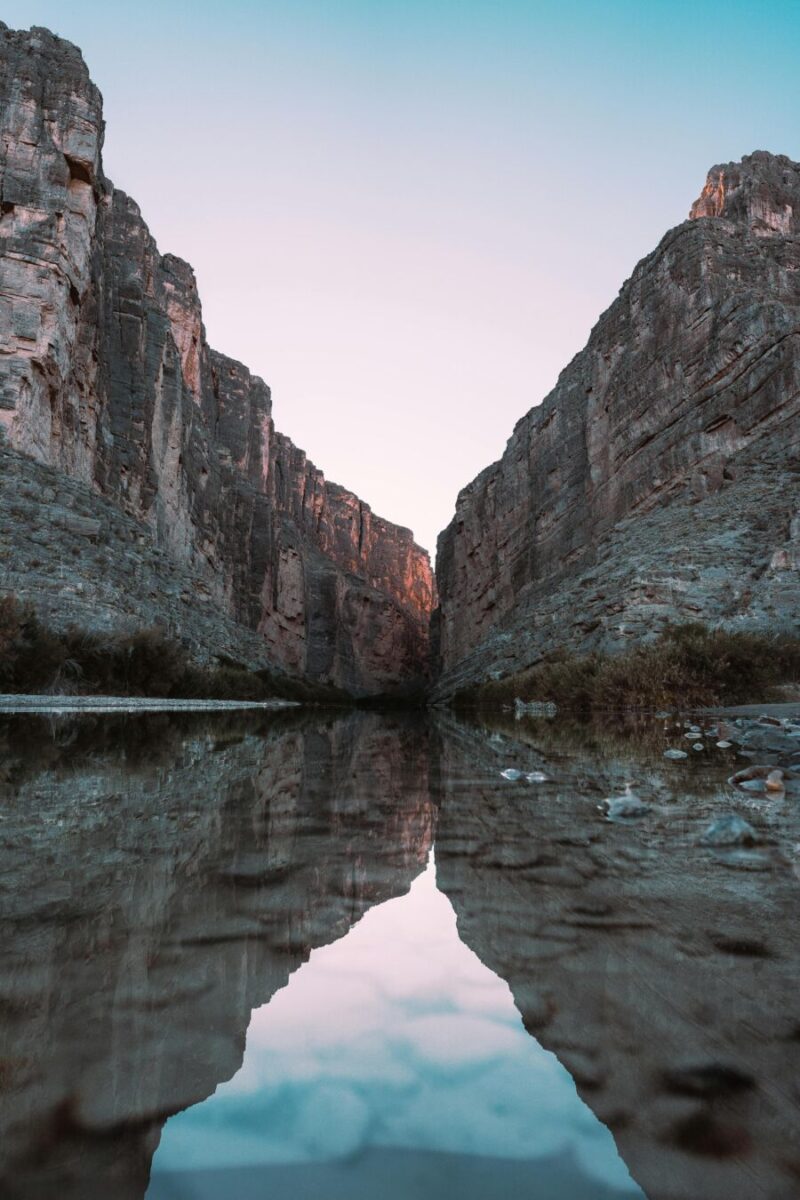
Big Bend offers a mix of desert, mountain, and river landscapes. Winter days are mild, with highs in the 60s and 70s. Start your visit at the Chisos Basin, where you’ll find scenic trails and stunning mountain views.
Hike the Window Trail for a classic Big Bend experience. This 5.6-mile round trip takes you through oak and juniper woodlands to a pour-off overlooking the desert. For a real challenge, tackle the South Rim Trail for breathtaking vistas.
Don’t miss a soak in the hot springs along the Rio Grande. The 105-degree water is extra refreshing on a cool winter day. Keep your eyes peeled for roadrunners and javelinas as you explore.
Winter Wildlife Watching in National Parks

Bundling up for a chilly adventure in national parks during winter can lead to amazing wildlife encounters. You’ll find fewer crowds and more chances to spot animals in their natural habitats.
Yellowstone is a top pick for winter wildlife watching. You might catch sight of bison trudging through snow-covered meadows. These massive beasts are incredibly hardy, withstanding frigid temperatures with their thick coats.
In Everglades National Park, winter is prime time to see alligators. The cooler weather brings them out to bask in the sun. You can often spot them along hiking trails or during boat tours.
Rocky Mountain National Park offers great opportunities to view elk and mule deer. They move to lower elevations in winter, making them easier to spot. Dawn and dusk are the best times to look for these majestic creatures.
Don’t forget your binoculars when visiting Everglades or other coastal parks. You might spy colorful roseate spoonbills wading in shallow waters. Their bright pink feathers stand out beautifully against winter landscapes.
Here are some tips for winter wildlife watching:
- Dress in warm layers
- Bring a good pair of binoculars
- Stay quiet and move slowly
- Keep a safe distance from animals
- Check park websites for wildlife viewing areas
Unique Winter Festivals and Events at National Parks

Ready for some winter fun at America’s national parks? You’re in for a treat! These parks host amazing festivals and events that celebrate the chilly season.
Ever heard of the Winter Festival at Yellowstone? It’s a must-see! You can join in on guided snowshoe hikes, watch wildlife, and even try your hand at ice fishing. The park turns into a snowy wonderland, perfect for making memories with your family.
At Yosemite, the Bracebridge Dinner is a holiday tradition you won’t want to miss. It’s like stepping back in time to an 18th-century English manor. You’ll enjoy a fancy feast and live performances in a magical setting.
For a taste of Native American culture, head to Mesa Verde National Park. Their winter solstice events showcase ancient traditions and stargazing opportunities. It’s a great way to learn about the area’s rich cultural heritage.
Looking for something truly unique? Check out the Frozen Assets Winter Festival at Apostle Islands. You can explore ice caves, go dog sledding, and warm up with hot cocoa by a bonfire.
Remember to bundle up and book early! These events are popular and spots fill up fast. Winter in the national parks is full of surprises and magical moments you’ll cherish forever.
Cold-Weather Hiking: Preparing for Winter Trails

Winter hiking can be magical, but it needs some extra prep. You’ll want to bundle up and bring the right gear to stay safe and comfy on frosty trails.
First things first – dress in layers! Start with a base layer to wick sweat, add an insulating middle layer, and top it off with a waterproof shell. Don’t forget warm socks and sturdy, waterproof boots.
Pack smart snacks like trail mix and energy bars. Your body burns more calories in the cold. Bring plenty of water too – you can still get dehydrated in winter.
Traction is key on icy paths. Strap on some microspikes or crampons over your boots. Trekking poles help with balance and testing snow depth.
Check the weather and trail conditions before you go. Let someone know your plans. It gets dark early in winter, so bring a headlamp just in case.
Watch out for signs of hypothermia or frostbite. Take breaks in sheltered spots to warm up if needed.
With the right prep, winter hiking can be a blast. You’ll see gorgeous snowy vistas and have trails all to yourself. Just remember – safety first! Don’t push yourself too hard in tough conditions.
Photographing the Winter Scenery in National Parks
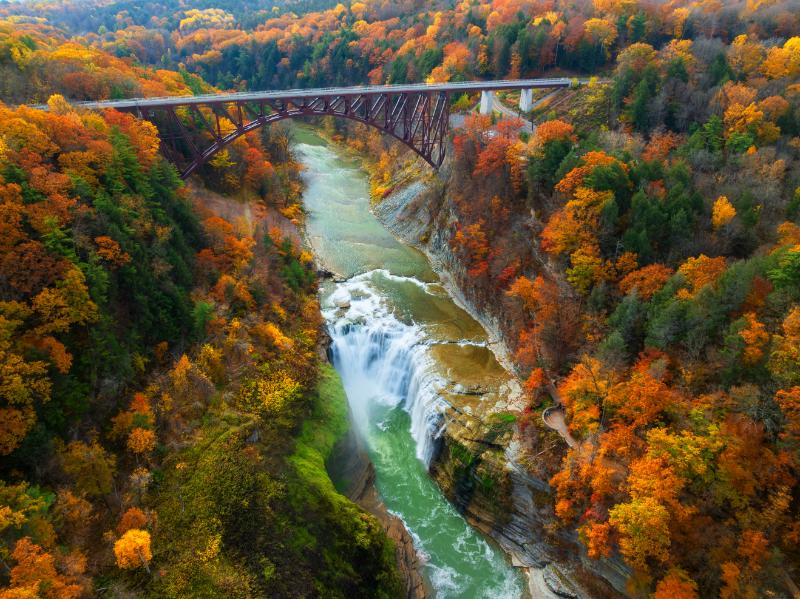
Winter transforms national parks into magical wonderlands, perfect for capturing stunning photos. The snow-covered landscapes create a whole new world to explore through your lens.
Light is your friend in winter photography. The low angle of the sun casts long shadows and gives a warm glow to the scenery. Early mornings and late afternoons offer the best lighting conditions for your shots.
Snow acts as a natural reflector, bouncing light around and softening harsh shadows. This can make for some beautiful, even lighting on your subjects. Just be careful not to overexpose your images – snow can trick your camera’s light meter.
Don’t forget to pack extra batteries! Cold weather drains them quickly. Keep spares in an inside pocket to keep them warm. A tripod is also essential for those crisp, clear shots in low light conditions.
Look for contrasts in your compositions. Dark tree trunks against white snow, or a bright red bird perched on an icy branch can make for eye-catching images. Frozen waterfalls and icicles offer unique photo opportunities you won’t find any other time of year.
Be prepared for the cold. Dress in layers and bring hand warmers to keep your fingers nimble on the camera controls. Protect your gear too – sudden temperature changes can cause condensation inside your camera.
Remember, safety first! Always check weather conditions and park alerts before heading out. Some roads and trails may be closed in winter, so plan your photo adventure accordingly.
Staying Warm: How to Enjoy National Parks During the Cooler Months

Winter in national parks can be magical, but it’s important to stay warm. Layering is key! Start with a moisture-wicking base layer, add insulating mid-layers, and top it off with a waterproof outer shell. Don’t forget warm socks and sturdy boots.
Bring hand and foot warmers for extra toasty digits. A thermos of hot cocoa or soup can warm you from the inside out. And don’t underestimate the power of a good hat and gloves!
Many parks offer cozy lodges or cabins for overnight stays. These warm accommodations let you enjoy winter scenery without braving the cold all night. Some even have fireplaces – perfect for curling up with a book after a day of exploring.
If you’re feeling adventurous, try cold-weather camping. Invest in a quality four-season tent and sleeping bag rated for low temperatures. Set up camp near natural windbreaks like rock formations or dense trees.
Fire pits are your best friend in winter. Gather ’round for warmth, storytelling, and maybe even some s’mores. Just be sure to follow park rules about fires and firewood.
Staying active helps keep you warm. Go for a brisk hike, try snowshoeing, or hit the cross-country ski trails. The beautiful winter landscapes will make you forget about the cold in no time!
Winter Accessibility and Facilities in National Parks

Visiting national parks in winter can be magical, but it’s important to know what to expect. Many parks have limited access and services during the colder months. Don’t worry though – with some planning, you can still have an amazing trip!
Most visitor centers stay open year-round, offering a cozy place to warm up and learn about the park. You’ll find park rangers ready to answer questions and help plan your visit. Some centers even have special winter programs or exhibits.
Accessible trails are often available, though they may be fewer than in summer. Look for plowed or groomed paths perfect for walking or cross-country skiing. Some parks offer guided snowshoe hikes too – a fun way to explore!
Here’s a quick rundown of typical winter facilities:
- Restrooms: Usually available, but may be limited
- Lodges/Cabins: Some stay open, others close seasonally
- Campgrounds: Often reduced, with fewer amenities
- Roads: Main roads plowed, but some scenic drives close
Remember to check the park’s website before you go. It’ll have the most up-to-date info on what’s open and any winter safety tips. And don’t forget to pack warm layers – you’ll want to stay comfy while enjoying those stunning snowy views!
Escape to a Tropical Paradise: Winter Visits to Warmer National Parks

You can beat the winter chill by visiting some of Florida’s stunning national parks. These spots offer warm weather, beautiful beaches, and amazing wildlife.
Everglades National Park
Want to see alligators up close? Head to Everglades National Park! This huge wetland is perfect for winter visits. The weather is mild and dry, making it great for hiking and wildlife spotting.
Take an airboat tour through the marshes. You’ll likely see lots of gators sunning themselves. Birds are everywhere too – keep an eye out for herons, egrets, and even pink flamingos!
Hiking trails let you explore different habitats. The Anhinga Trail is an easy boardwalk with tons of wildlife. For a longer trek, try the Gumbo Limbo Trail through a tropical hardwood forest.
Biscayne National Park
Biscayne is a water lover’s dream. This park is mostly underwater, protecting coral reefs and sea life. Winter temps are perfect for snorkeling and kayaking.
Rent a kayak to paddle around the mangrove-lined shores. You might spot manatees or sea turtles swimming by. The clear waters make it easy to see colorful fish darting about.
For the best snorkeling, take a boat tour to the coral reefs. You’ll see bright tropical fish, sea fans, and maybe even a reef shark or two. Don’t forget your underwater camera!
Dry Tortugas National Park
For a real escape, hop on a ferry to Dry Tortugas. This remote park is 70 miles from Key West. It’s home to crystal clear waters, pristine beaches, and an old fort.
Snorkel right off the beach to see vibrant coral reefs teeming with fish. The shallow waters are perfect for beginners. Keep an eye out for sea turtles – they love it here!
Explore Fort Jefferson, a massive 19th century fort. Climb to the top for amazing views. Pack a picnic to enjoy on the beach. With only 60,000 yearly visitors, you’ll feel like you have the place to yourself!
Winter Camping Tips for National Park Adventurers
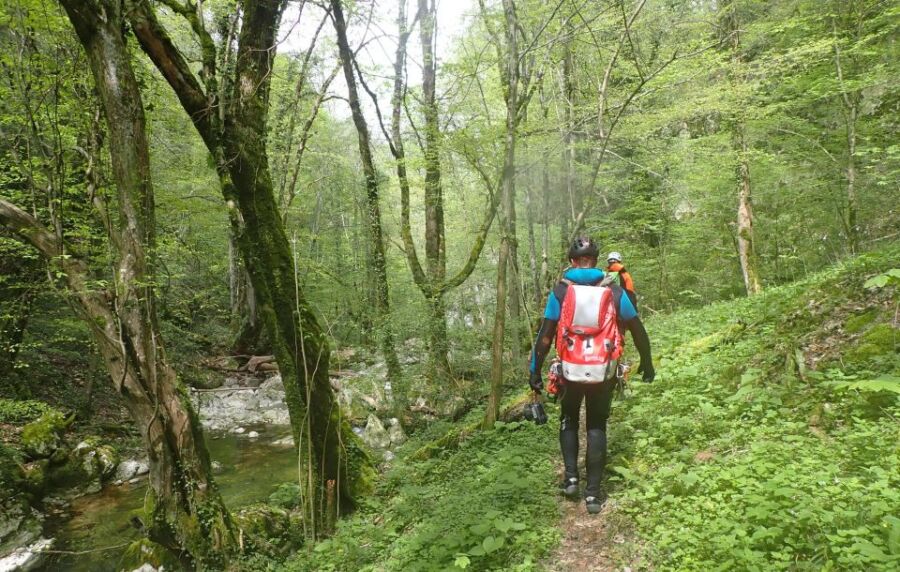
Want to experience the magic of national parks in winter? Camping in snowy landscapes can be amazing, but it takes some prep. Here are some tips to keep you cozy and safe on your cold-weather adventure.
First things first – gear up! You’ll need a 4-season tent, a warm sleeping bag rated for low temps, and a good sleeping pad. Don’t forget extra layers, warm socks, and waterproof boots.
Stay toasty with the right clothes. Layer up with moisture-wicking base layers, insulating mid-layers, and a waterproof outer shell. Hats, gloves, and scarves are must-haves too.
Fire safety is crucial in winter. Only use designated fire pits and keep flames small. Bring a camp stove for cooking – it’s safer and more reliable in cold weather.
Pack plenty of high-energy snacks and hot drinks. Your body burns more calories staying warm, so fuel up often. A thermos of hot cocoa can be a real mood-booster!
Watch the weather closely and know when to call it quits. Winter storms can be dangerous, so have a backup plan and be ready to head home if conditions worsen.
Leave no trace, even in snow. Pack out all your trash and follow park rules about where to camp. Respect wildlife and keep your distance – animals are working hard to survive winter too.
Frequently Asked Questions
Winter transforms many national parks into magical wonderlands. Snow-capped mountains, frozen waterfalls, and peaceful trails await adventurous visitors. Let’s explore some common questions about enjoying parks during the chilly season.
What are the top winter-friendly national parks in the United States?
Yellowstone is a top pick for winter fun. You’ll see steaming geysers surrounded by snow and maybe spot wolves or bison. Yosemite’s waterfalls freeze into stunning ice sculptures. And don’t miss the Grand Canyon – its red rocks look even more striking dusted with white.
Which national parks in California offer the best winter experiences?
Death Valley is perfect in winter. The scorching summer heat gives way to mild temps ideal for hiking. Sequoia and Kings Canyon are magical when giant redwoods wear snowy “blankets.” Joshua Tree’s desert landscape takes on a whole new beauty with a dusting of snow.
Are there any national parks particularly suitable for family visits during the winter season?
Rocky Mountain National Park is great for families. You can go sledding, snowshoeing, or just build snowmen. Bryce Canyon offers ranger-led snowshoe hikes kids love. And Olympic National Park has cozy lodges where you can warm up after playing in the snow.
What national parks in the southern United States remain warm during January?
Everglades National Park stays warm and dry in winter. It’s the best time to spot alligators and birds. Big Bend in Texas offers sunny days perfect for desert hikes. And the Virgin Islands National Park lets you trade snow for sand and tropical beaches.
Can Zion National Park be enjoyed during the winter months?
Yes! Zion is amazing in winter. The red rocks look stunning with a light snow cover. Crowds are smaller, so you can enjoy peaceful hikes. Just be ready for chilly temps and bring layers. Some trails might be icy, so check conditions before you go.
Which national park is often rated as the most stunning to visit in winter?
Glacier National Park wins many votes for winter beauty. The name fits perfectly as snow blankets the mountains. You might see frozen waterfalls and icy lakes. Wildlife like moose and mountain goats are easier to spot against the white backdrop.

